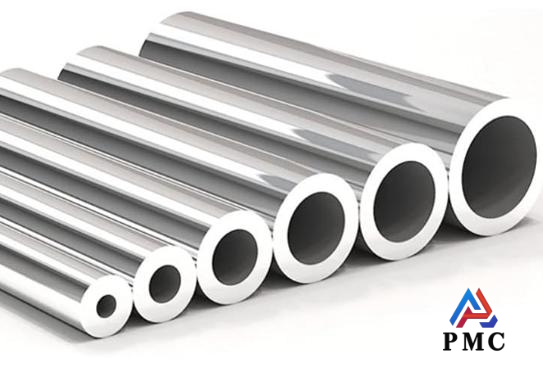
The Conditions of Stainless Steel Seamless Tube Corrosion
Heat treatment process includes heating, insulation, cooling, etc. This is done in order to reduce the deformation of the metal forming process hardening and other deficiencies, so that the deformation of the pipe after processing to restore the performance, to improve its performance.
Now the most common heat treatment tools include electric furnace and reverberatory furnace; common control mode is automatic temperature control mode.
Different stainless steel seamless pipe fittings on the heat treatment requirements are different, and not all deformation of the tools must be heat-treated, usually the final temperature of low-carbon steel pipe fittings is not less than 723 ℃, then you can not heat treatment, if lower than this temperature or the temperature above 1000 degrees celsius should be heat treatment.

Characteristics of stainless steel seamless pipe
First, the thicker the wall thickness of the stainless steel seamless tube, the more economical and practical it is. The thinner the wall thickness, the higher the processing cost.
Secondly, the process of stainless steel seamless tube determines its limited performance. Generally, seamless tube has low precision: uneven wall thickness, low brightness of the inner and outer surfaces of the pipe, high cost of fixed length, and pitting and black spots on the inner and outer surfaces are not easy to remove;
Third, the inspection and shaping of stainless steel seamless tubes must be processed offline. Therefore, it demonstrates its superiority in high pressure, high strength, and mechanical structural materials.
Protection and countermeasures
1. It should be wiped regularly with a mild detergent and soft cloth to remove surface dust, stains and attachments. Avoid using hard tools such as steel wool to prevent scratching the surface and damaging the passivation film.
2. In high humidity, high pollution or acid, alkali and salt environments, protection should be strengthened, such as installing ventilation equipment to reduce humidity, using anti-corrosion coatings or covering protective materials.
3. The selection of suitable materials should not be ignored. The corresponding materials should be selected according to the use environment. For example, in coastal areas or high-chloride environments, molybdenum-containing 316L stainless steel seamless pipes have stronger resistance to pitting and crevice corrosion.
4. If the stainless steel seamless tube has been corroded, it can be polished with tools such as steel wool to remove the oxide scale and rust.
5. In more serious cases, chemical pickling can remove scale, rust and old coating, but it is easy to pollute the environment.
6. Blasting (spraying) rust removal uses abrasives to blast the surface of the steel pipe, which can not only remove rust, oxides and dirt, but also form a uniform roughness and enhance the adhesion of the anti-corrosion layer. It is an ideal rust removal method.


